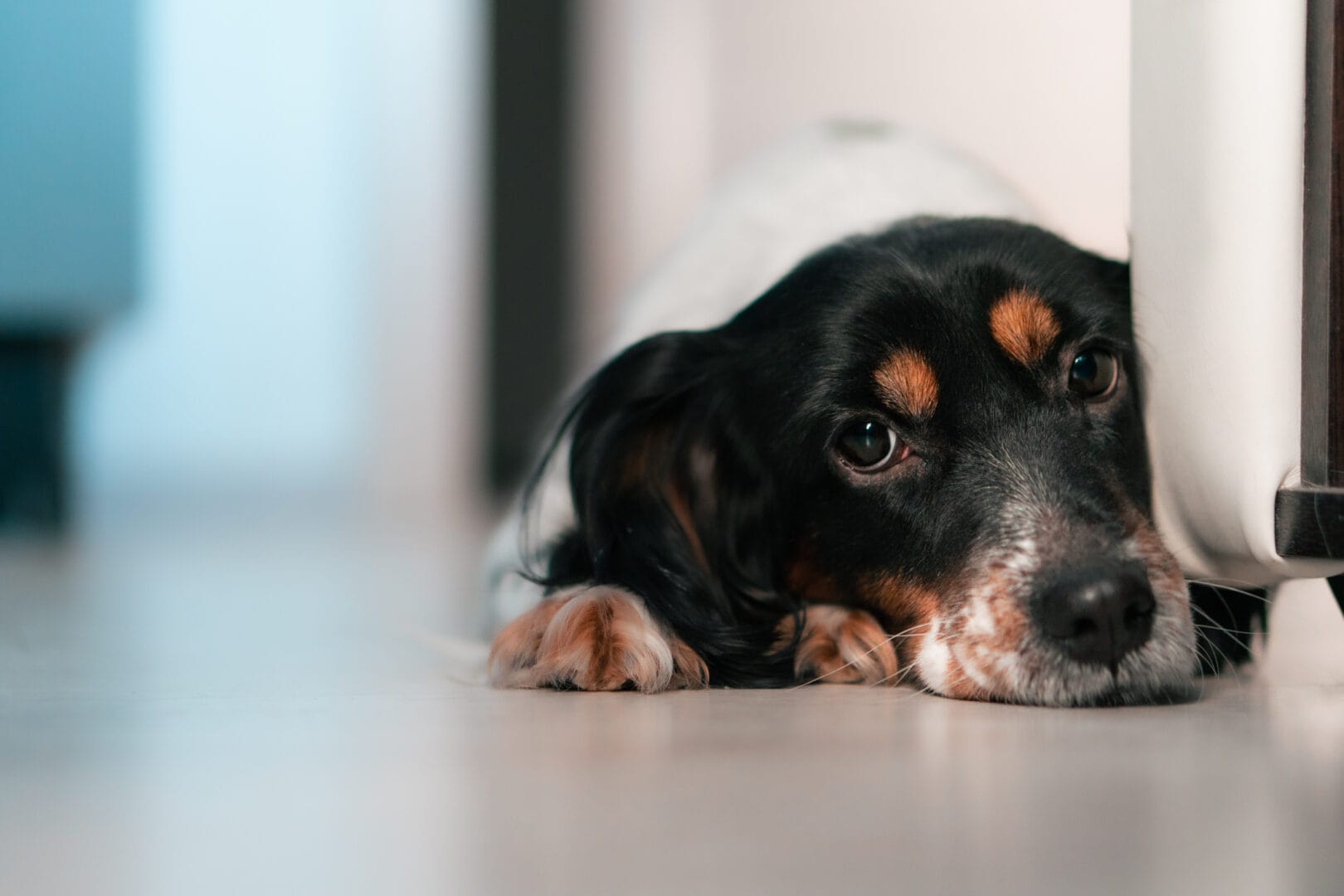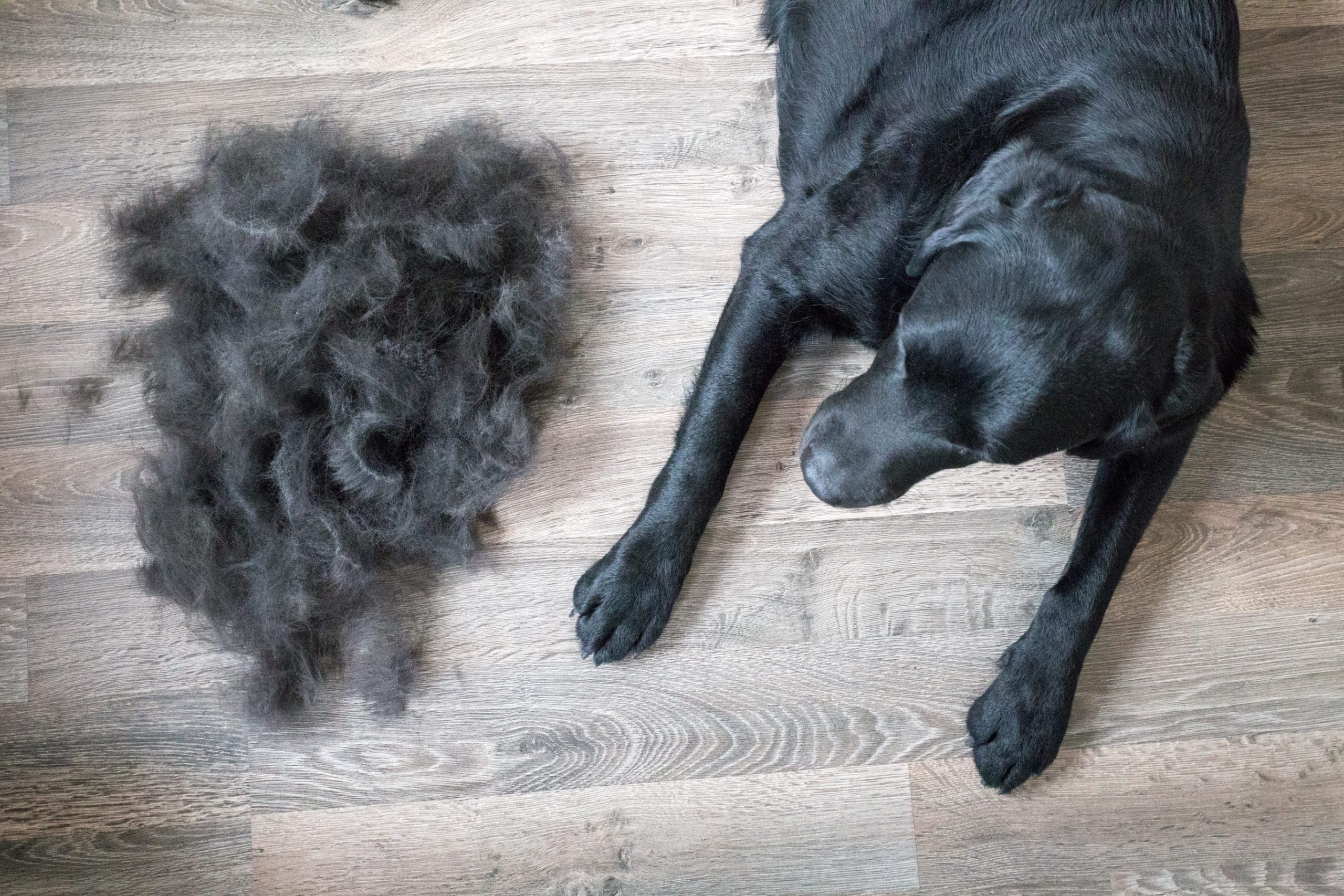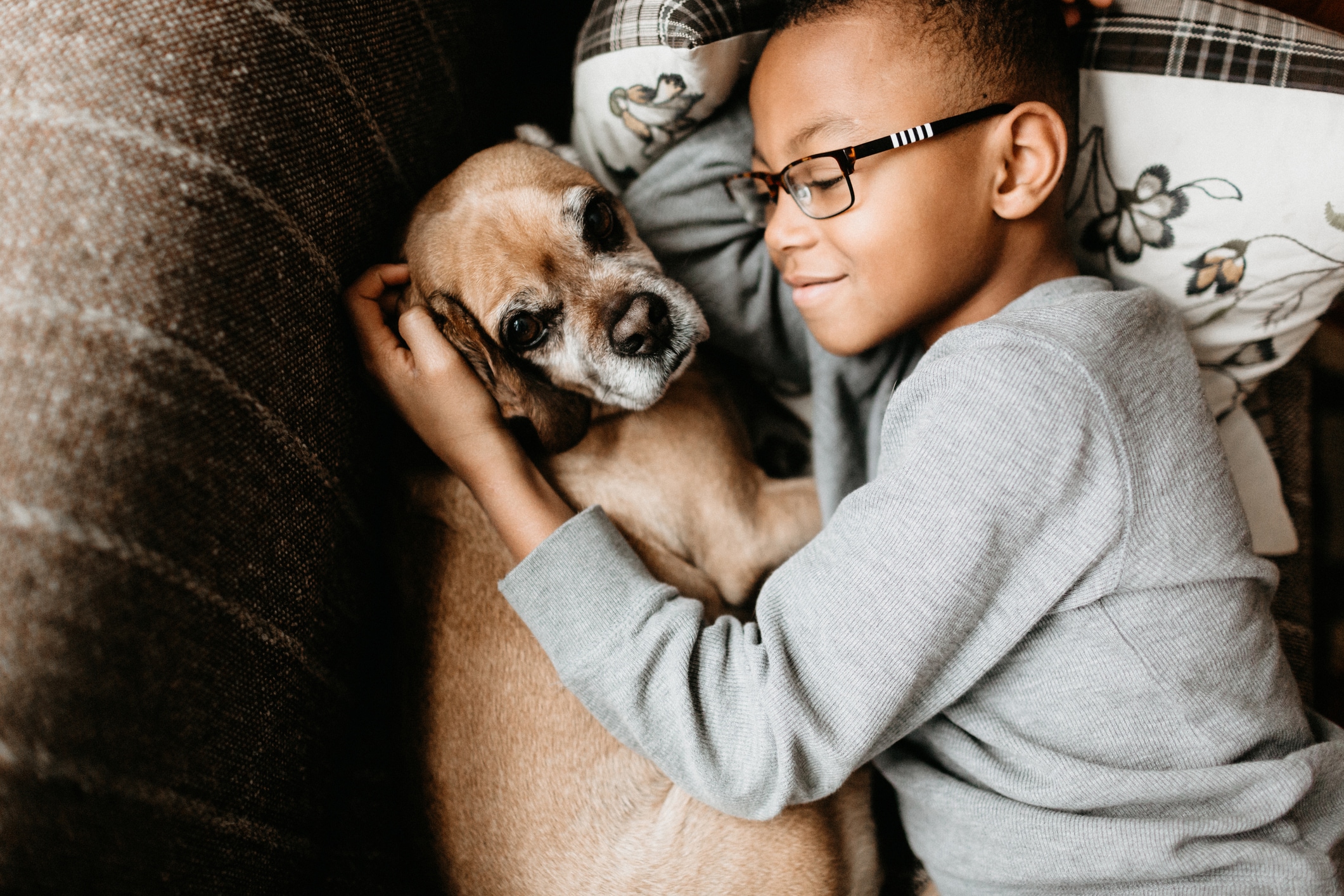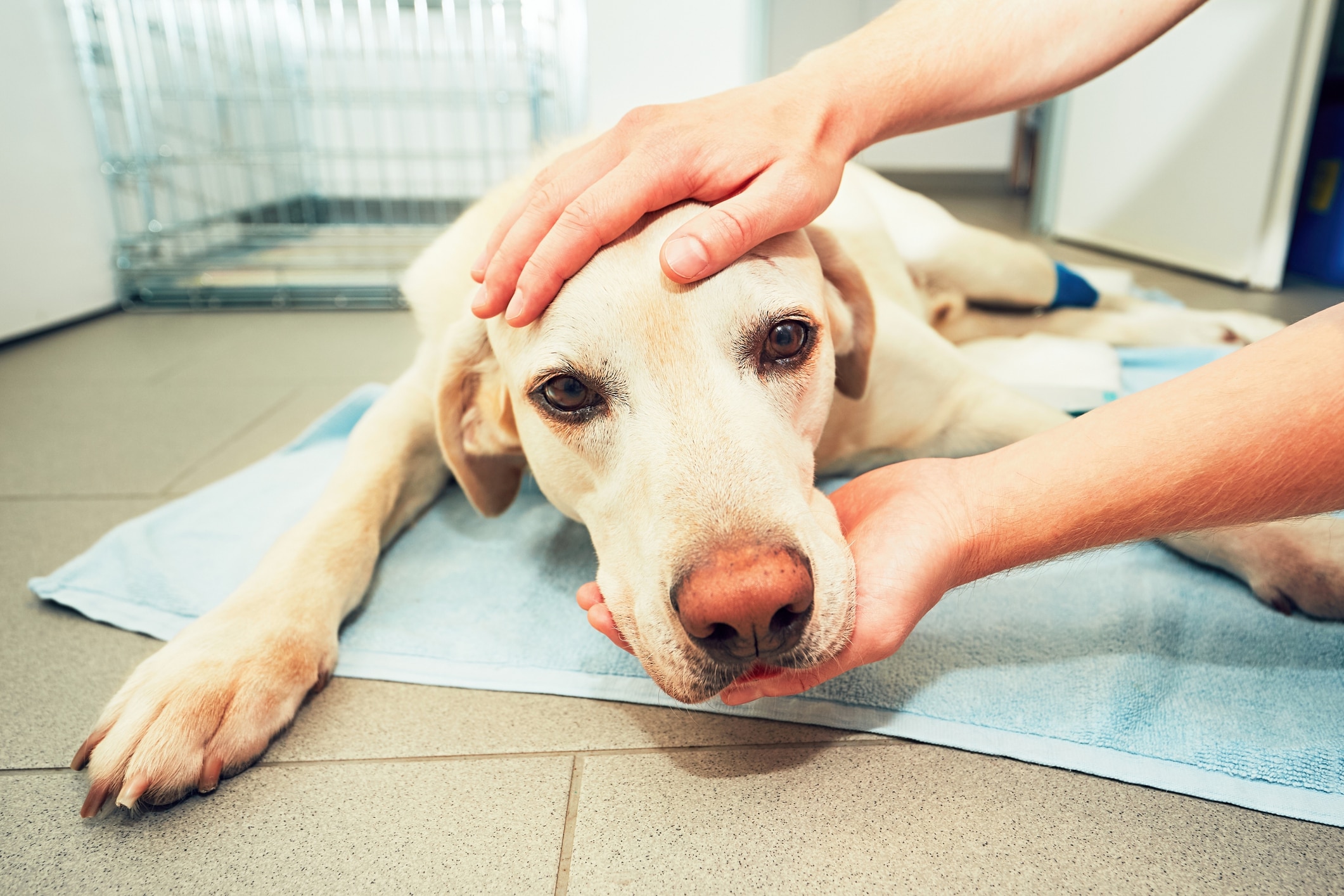It’s an all-too familiar scenario: You leave your dog at home while you run an errand and when you get back, you’re met with a disaster. Either there’s a puddle of pee on the floor (when your dog is fully potty-trained) or a hole dug into a couch cushion or bite-marks on the window sill… clearly, your dog was very unhappy to be left alone and wants you to know.
What is separation anxiety in dogs?
Why can’t your dog handle being on their own? While lots of dogs exhibit “clingy” behavior, your pup’s need to be by your side can be problematic if they develop separation anxiety. This is more serious than the clingy behavior displayed by what’s known as a “velcro” dog. The difference is, velcro dogs are typically okay when they’re left home alone, and dogs with separation anxiety are not.
“These behaviors are a manifestation of the dog’s underlying emotion of worry over being left alone,” says Kait Hembree, head of training at GoodPup, in Connelly Springs, North Carolina. “If you want to change the behaviors, then you have to address the emotion.”
If you’re dealing with these issues with your dog, you’re not alone. Separation-related problems are a prevalent issue in the dog training community, Hembree says.
Here are the signs and symptoms of separation anxiety in dogs, as well as what you can do about it.
Signs of separation anxiety in dogs and expert tips to help your pet
1. Excessive vocalization
“Dogs with separation anxiety may bark, howl or whine excessively when left alone,” says Denver-based veterinarian Dr. Alejandro Caos of The Vets. Dogs might also whine or cry when they see that you’re getting ready to leave. Hembree explains that the way your dog barks when you’re gone can be indicative of their level of separation anxiety; “short intervals of barking that stop 15 or 20 minutes after the owner leaves” show a lower level of stress while “excessive, loud, nonstop barking” the whole time you’re gone means your dog’s anxiety is more intense.
What to do: The goal is to retrain your dog’s brain. This is known as counterconditioning: “Create positive associations with departure cues (e.g., picking up keys) by pairing them with rewards or activities that your dog enjoys,” says Caos. “This can help reduce anxiety associated with these cues.” You can also try switching things up: Put on your shoes and instead of walking out the door, sit down and watch TV.
2. Destructive behavior
When left alone, dogs with separation anxiety may cause destruction in the home, says Hembree, biting, digging and scratching at everything from doorways and flooring to walls and furniture.
What to do: “A dog who is destructive when left alone can be a big issue,” says Lubbock, Texas veterinarian Dr. Jamie Whittenburg. “But it is important to remember that they are not being destructive out of spite. Also, there are no quick fixes to dog separation anxiety and helping your dog will take time, perseverance and patience. While you are working to ease your dog’s anxiety, you may have to implement temporary measures to avoid destruction like having a friend or pet sitter stay with them or not leaving them alone for long periods.”
3. Having accidents in the house
“Some dogs with separation anxiety may urinate or defecate in the house even if they are house trained,” says Caos. As with destructive behavior, this can be especially aggravating for pet parents who have to deal with damaged property in addition to an anxious dog.
What to do: Don’t punish or reprimand your dog for having an accident. “This could be due to medical issues, potty issues or separation anxiety,” says Mindy Waite, certified dog behaviorist, of Waukesha, Wisconsin. “The first step is to work with a professional to identify why this behavior is occurring. Only then can you target the issue.”
4. Pacing
If your dog paces around restlessly during your departure and seems unable to settle or relax, that’s another sign they could be suffering from separation anxiety, says Hembree. They might walk back and forth in a straight line or go in circles, but as with soiling the house, they most likely don’t do this when their guardian is staying at home.
What to do: “Teach your dog that it’s OK to be alone by gradually increasing their time on their own,” says veterinarian Dr. Sabrina Kong of Tracy, California. “You can start by stepping out of the room for a few minutes, then gradually increasing the time.” This should be done very slowly and carefully, she says, as pushing your dog too fast can worsen their anxiety.
5. Excessive drooling and/or panting
All dogs drool and pant sometimes. But if your dog is drooling or panting more than seems normal and it’s not hot outside, this might be another sign of separation anxiety, says Hembree.
What to do: Give your dog a safe space to go when they’re feeling anxious. “Create a small dog-proofed area in the home where the dog can stay if a guardian needs to leave,” says Hembree. “Studies show that dogs suffering from separation-related behavior problems do best with more freedom versus the confinement of a crate.”
6. Escape attempts
When left alone, your dog may try to escape its confinement area or even the house, says Caos. You might find your pup has been scratching at doors and window sills, for example.
What to do: This might be the time to seek help. “Consult with a professional dog trainer or behaviorist experienced in separation anxiety to develop a tailored behavior modification plan for your dog,” suggests Caos. “They can provide guidance, support and additional techniques to address the specific needs of your dog. In severe cases, medication prescribed by a veterinarian may be recommended to help reduce anxiety and support the behavior modification process.”
Separation anxiety can be difficult to deal with, but it’s something you and your dog can work through together, potentially with some direction from the experts. Try not to let the process discourage you.
“Remember that every dog is unique, and what works for one may not work for another,” says Kong. “It’s also important to be patient and consistent, as changing behavior takes time.”
With this expert advice, your dog could be on their way to being just fine on their own. You won’t always have to worry when you leave the house.





